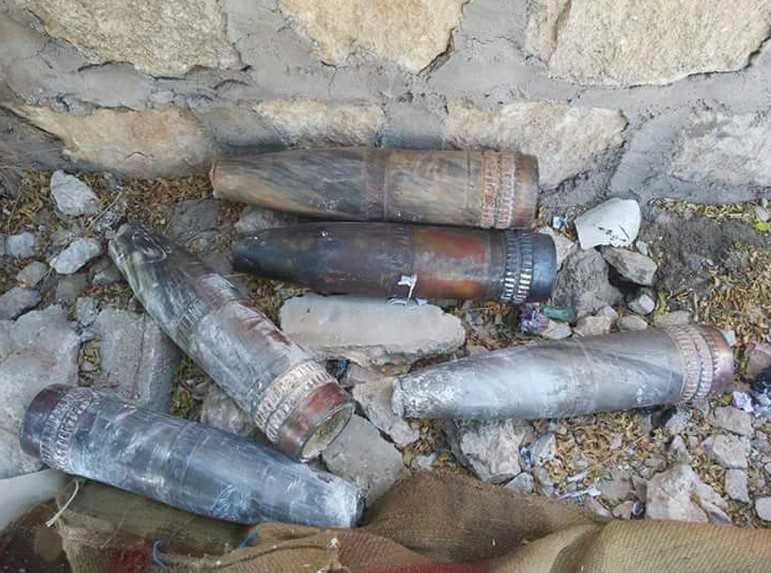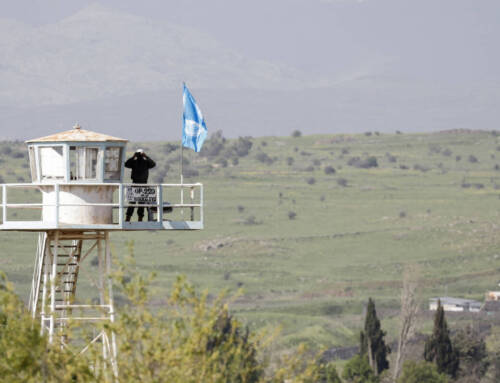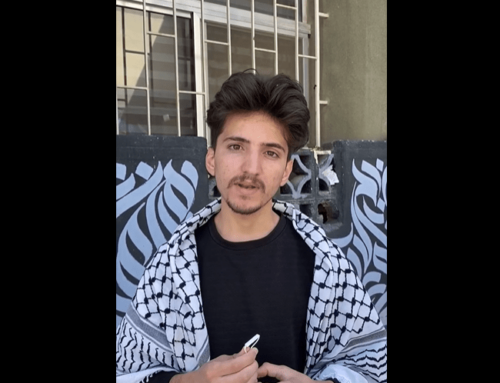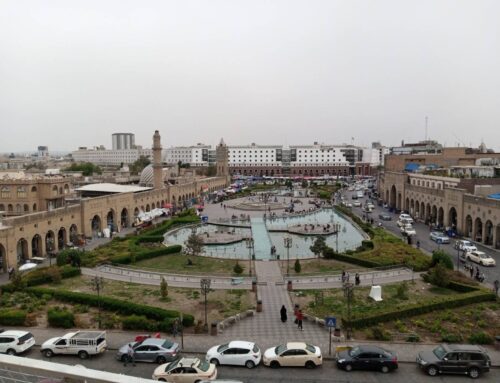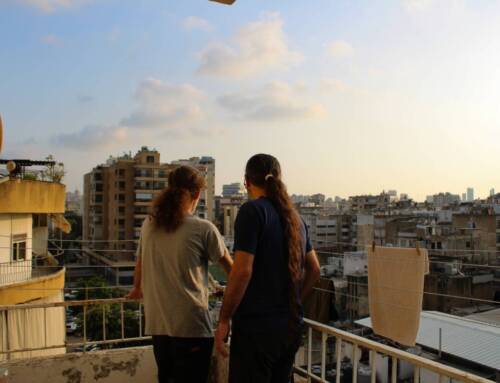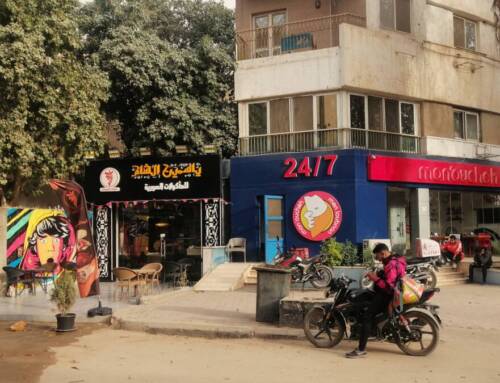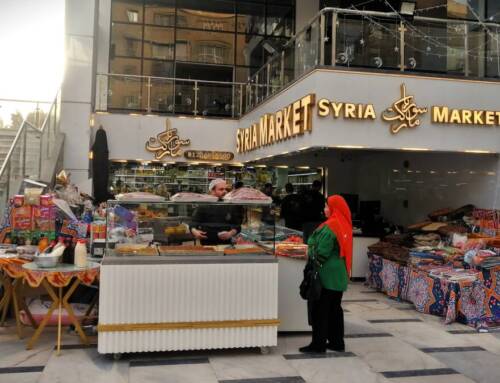Did IS strike Marea with mustard agent?
Did IS strike Marea with mustard agent? Photo evidence […]
9 September 2015
Did IS strike Marea with mustard agent? Photo evidence and expert testimonials point to a chemical attack in Syria’s north. Above, shells allegedly fired in the IS chemical attack against Marea on August 21.
AMMAN: By midnight of August 21, the Islamic State (IS) allegedly launched an indiscriminate artillery bombardment on rebel-held Marea, compounding citizen and rebel fears that it would soon storm the north Aleppo town.
Marea, surrounded on three sides by IS, lies on the frontline of a month-old IS offensive attacking wide swaths of rebel-held lands in north Syria.
As the shells fell, medical staff at Marea Hospital prepared to receive the wounded, as they do after every shelling, treating torn limbs, internal bleeding and metal inside the body.
Yet the attack did more than maim its victims; hospital staff immediately noticed unusual symptoms.
About 10 wounded, “some of them children, arrived at our emergency room, complaining of difficulty breathing, red eyes and skin, swelling eyelids and stinking of an awful smell,” Tariq a-Najjar, the administrative director of Marea Hospital, told Shahba Press Agency on August 21, the day of the attack.
Following the strike, the Syrian American Medical Society (SAMS) reported it treated “more than 23 civilians exhibiting symptoms of chemical exposure.” Médecins sans Frontières (MSF) corroborated SAMS’s account, claiming it had treated at an MSF field hospital “[four] patients, all from the same family,” whose “ clinical symptoms, the way [they] changed over time, and the patients’ testimony about the circumstances of the poisoning, all point to exposure to a chemical agent.”
Arabic-language news and social media reported “indiscriminate” IS “artillery” bombarded Marea. Accounts abound, yet anything from “dozens” of projectiles, said the Aleppo Civil Defense Forces, to “over 100,” reported the Local Coordination Committee of Syria, fell “at random” on Marea. At first, journalists, activists and news sites said nothing of a “mustard gas,” or an even unconventional attack, as later reported in both opposition and regime media.
Some 50 shells struck Marea, said a-Najjar. At least one reportedly smashed into a family’s home, exploding inside. The shell then released a poison gas, concluded MSF four days later.
By 3:54 PM GMT on August 21, the pro-opposition Syrian Revolution Forum tweeted a screenshot of two Shaam News Network photographs–a red- and puffy-eyed male, perhaps in his late twenties, reportedly among the injured in the IS-artillery attack on Marea.
Approximately five hours later, Hama-based activist Abu al-Huda al-Hamawi tweeted a photograph documenting the same red, puffy eyes, this time afflicting a different patient, a man in his thirties, apparently treated at a hospital at or near Marea.
But two additional images of reported patient injuries at Marea, tweeted by 9:43 PM GMT on August 22 by opposition journalist Mohamed al-Fateh, told more about what was inside the shells.4 One photograph shows a young man, or a boy, with fluid-filled eyelids. Another photograph shows engorged, yellow blisters, covering a man’s back.
Physicians for Human Rights (PHR) assessed photographs of alleged mustard-agent victims in a statement to Open Syria as “very characteristic of mustard gas injuries.”
“The red, irritated eyes are what many irritants will cause, but the puffy eyelids are very characteristic of mustard gas, as are the blisters,” Dr. Alastair Hay, professor of environmental toxicology at the University of Leeds, and chemical weapons expert with PHR, told Open Syria.
“All of the signs I saw in the photos are characteristic of mustard gas injuries–but it is the range of signs that point to something like mustard gas as the cause,” said Hay.
SAMS reported an on-the-ground diagnosis of mustard-agent poisoning. Marea medical staff blamed the attack on IS in an August 21 interview with Shahba Press. The Aleppo-based FSA affiliate Division 13 concurred on August 23, posting on Facebook the same photograph of a man suffering from heavy back blisters, whom it claimed belonged to the division’s ranks, with his wife and children in a “critical state” following the “IS poison gas shelling.”
Of the many injured, one is now dead: An infant, later identified by The Guardian newspaper as the four-day-old daughter of 31-year-old Ahmed Latouf, who along with his wife, also fell poisoned. The baby girl reportedly died of her wounds in a Turkish hospital on September 7, according to social-media reports circulating an image of the infant’s burned, bloated body.
In the days that followed the attack, activists and journalists shared videos and photographs of at least five artillery shells, which they claimed IS fired on Marea. It was later alleged the photographed shells contained mustard agent. The devices appeared as intact shells.
After analyzing the images, Open Syria believes it is highly unlikely that the photographed shells dispersed mustard agent over Marea. Modern mustard-agent artillery shells contain a central tube of high explosives, which upon detonation turn the surrounding mustard agent–a thick, syrupy liquid, not a gas–into a fine cloud, thereby shattering the artillery shell.
With the exception of a dud, the remains of a mustard-agent artillery shell would therefore scatter far and wide in broken pieces, some the size of a person’s palm. We would not observe an intact projectile, which leads us to believe that photographs of alleged mustard-agent munitions, reportedly taken at Marea and circulated on August 21, are mistaken.
This does not mean IS did not bombard Marea on August 21, or deploy a mustard-like blistering agent–an attack reportedly repeated against Marea on September 1, inflicting similar wounds.
It only means that we have not discovered the physical evidence: the remains of an identifiable chemical munition. Regardless, Open Syria concludes that IS attacked Marea, either by mortar or by shell, containing a mustard-like blistering agent, on August 21.1
How did they do it?
Marea is the latest target in a recent string of credible IS mustard-agent attacks in Syria and Iraq. Field tests conducted by American military personnel on mortar fragments reportedly fired by IS against Kurdish forces in Makhmour, Iraq on August 11 and in al-Hasakah, Syria on August 1 tested positive for mustard agent. 2
“We have information that IS used mustard gas in northern Iraq,” German intelligence head Gerhard Schindler told the German daily Bild on September 7, perhaps in reference to the Makhmour chemical shelling.
Marea, however, is the first strike in which the onset and expression of patient symptoms, as documented over social media, so closely match exposure to mustard agent. But if IS indeed deployed mustard agent at Marea, how did it get it?
Firstly, modifying conventional munitions, or making one’s own, to deliver stolen or even home-brewed agents, is a complex and dangerous task. IS chemists must first perfect a mustard-like blistering agent, either from scratch, or using one or more mustard-agent precursors–the raw-material chemicals used to mass-produce poisons.
In parallel to the work of chemists, engineers must master the daunting challenge of producing a do-it-yourself mustard-agent artillery shell capable of withstanding the extraordinary violence of fire through a field gun. Even filling the device could leave scores of men injured.
“The most dangerous job regardless of location involves filling artillery gas shells… Thousands of workers at British loading facilities were adversely affected; at one facility, one worker in nine fell ill or injured, and at another, the rate reached 100% of the labor force,” wrote Dr. Gerald Fitzgerald, quoting the father of the Germany Empire’s poison gas program, chemist Fritz Haber, on World War I mustard-agent production.
This is not to say IS could not master either task; lesser non-state actors have deployed surprisingly sophisticated do-it-yourself weaponry, especially homemade artillery. Rather, the effort and danger of a garage mustard-agent program largely outweigh the limited battlefield utility of mustard, best used to pollute and disable, not kill. Mustard can deny the enemy territory for hours, even days after release. Yet it poisons with a lethality rate between 1 and 3 percent.3 Good old-fashioned high explosives are cheaper and more reliable killers, if death and dismemberment were IS’s only objectives.
While concocting both a homemade mustard agent and a delivery mechanism seems far-fetched, the prospect of stealing, finding or buying mustard agent in Syria or Iraq is plausible, given the worrisome combination of massive chemical weapons programs, and chaos.
A 2013 declassified French intelligence report, for example, estimates Syria possessed “several hundred tons of mustard, stockpiled in its final form.” Although some sources cite a total of 560 metric tons, it is unclear whether last year’s international effort to strip al-Assad of his chemical arsenal destroyed any more than 20 metric tons of final-form mustard agent, as stated in a presentation by the Organization for the Prohibition for Chemical Weapons (OPCW).
For its part, the Syrian government claims to have destroyed 200 metric tons at three sites in March of 2013, however, “to the best of my knowledge, [although] the OPCW has been able to ascertain that mustard agent destruction activities took place at the sites Syria claimed … it has not been able to establish the volume of agent destroyed,” Dr. Jean Pascal Zanders, chemical weapons expert, Director of the Trench, and former Project Leader of the Chemical and Biological Warfare Project at the Stockholm International Peace Research Institute (SIPRI), wrote to Open Syria.
“There is considerable frustration with Syria’s apparent lack of documentation of its CW-related activities, both armament and destruction–this of course does not mean that the weapons were not destroyed, but it creates a degree of uncertainty,” explained Dr. Zanders.
Mustard blistering agent may have thus escaped destruction, lost or hidden, somewhere inside Syria.
To the east in Iraq, the US military and UN personnel between 2003 and 2011 discovered Iraqi mustard-agent artillery shells in an overwhelmingly poor, un-fireable condition, buried or left to decay in dilapidated bunkers. Still, people may have traded or paid for Saddam-era mustard-agent shells on Iraq’s black markets, reported US technicians in Iraq.
More simply, armies lose things: According to a 1999 UN Special Commission report, “Iraq had not adequately accounted for 550 mustard-filled artillery rounds it claimed to have lost.” In the relative anarchy of Iraq, mustard-agent artillery shells, perhaps in fireable condition, may well have fallen into IS’s hands.
Open Syria now draws on open video and photo sources, specifically news and social media reports, photographs and videos, to further investigate what struck Marea on the early morning of August 21.
1. The Symptoms: Account, Assessment and Timeline
Account and Assessment
On August 25, MSF delivered a more detailed account of the Marea attack, noting it had treated four patients, all from one family, including “two parents, a three-year-old girl and a five-day-old baby girl” at an MSF-run hospital in north Aleppo on August 21.
From the MSF report:
The family came from the town of Marea…north of Aleppo, which had been under intense bombardment by mortars and artillery for a week. The patients said that a mortar shell hit their home at about 7:30pm [local time] on August 21. After the explosion, yellow gas filled their living room. The parents tried to protect their children by covering them with their own bodies. Neighbors raised the alarm and they were taken to Marea hospital, where they received first aid care. With their condition deteriorating, they were referred to MSF’s hospital.5
Although MSF had no laboratory evidence to confirm the cause of symptoms, “the patients’ clinical symptoms, the way the symptoms changed over time, and the patients’ testimony about the circumstances of the poisoning, all point to exposure to a chemical agent,” said Pablo Marco, MSF program manager for Syria, in the same report.
Of particular note is the delayed onset of blistering, which MSF reports to have occurred about four hours after initial exposure.
The [patients] arrived at MSF’s hospital one hour after the attack, suffering from respiratory difficulties, inflamed skin, red eyes and conjunctivitis. Within three hours they developed blisters and their respiratory difficulties worsened. MSF staff treated their symptoms and gave them oxygen before transferring them to another facility for specialized treatment.
The four-hour timeframe between initial exposure, and the onset of blistering, matches literature on the clinical effects of mustard agent.
“Although a smell will be noticed immediately, and minor eye irritation within a few minutes is possible, the effects of mustard agent take hours, in some cases many hours, to develop,” Dan Kaszeta, CBRN expert and founder of UK-based Strongpoint defense consultancy, wrote on open-source investigations site Bellingcat.
The following chart lists symptoms of mustard-agent exposure, alongside the designated timeframes of symptoms onset:
Terms glossary [approximate]: “Lid edema”: Fluid-filled eyelids; “Rhinorrhea”: Mucus-filled, runny nose; “Epistaxis”: Bleeding from the nose; “Erythema”: Reddening of the skin, rash; “Vesication”: Blisters. Source: Kaszeta, Dan. “Is it Mustard?” Bellingcat. October 2014.
Timeline
The following timeline presents comments, photographs and videos, as and when each appeared on Arabic-language news and social media, documenting injuries resulting from the August 21 chemical attack on Marea.
Warning: Timeline images are disturbing.
For a full-screen timeline view, click here.
2. The Weapon: Initial Evidence and Two Hypotheses
Initial evidence
The shells photographed following the reported IS chemical artillery attack are most likely conventional 130mm base-ejecting Chinese- or Russian-manufacture illumination or WP smoke artillery munitions. It is thus improbable the weapons either dispersed mustard agent, as claimed by journalists and activists, or inflicted wounds consistent with mustard-agent exposure.
IS artillery forces most likely fired a variety of shells against Marea, using smoke and illumination shells to perhaps hide fighter movements during a previous assault on the north Aleppo town, or to light the way for a vehicle-borne suicide IED. Given the telling, well-documented and assessed injuries of wounded residents, shells containing a mustard-like blistering agent probably fell in the multi-shell barrage.
However, for a reason we explain below, with the exception of a dud, only hard-to-find fragments would remain of the culprit munitions–not intact projectiles, as photographed.
We thus have yet to identify what dispersed mustard agent on Marea. The simplest hypothesis is that IS looted ready-to-go chemical artillery, i.e. mustard agent loaded in a viable delivery vehicle–an artillery or mortar shell–captured in either Iraq or Syria.7
As noted, little else seems plausible: Independently designing, developing and testing mustard agent, and a device to deliver the poison, would be complex, dangerous and expensive, and no more lethal than off-the-shelf high explosives.8
To begin, by the morning of August 21, at least two photographs of shell impact sites, and one photograph of intact artillery shells, reportedly fired by IS, appeared on Twitter.
Accompanying Tweet translation: “#Daesh’s shells at Marea express the true meaning of those boys: They kill the people of Islam, and call upon the people of the idols #Marea_Isn’t_Rome.” Abu Firas al-Halaby. Available on Twitter. August 21, 2015.
An additional photo appeared by the early morning of August 23.
Source: Higgins, Eliot. Available on Twitter. August 21, 2015.
Two Hypotheses
Hypothesis 1: IED Precursors
First, the shells are intact. Modern mustard-agent artillery shells contain a central tube of explosives, which detonate to disperse an otherwise thick, syrupy mustard agent in the form of a fine mist, in turn shattering the shell. We should thus observe fragments, not complete shells.
Second, artillery shells require fuses to explode, which screw into the projectile’s threaded nose. The above photographs however show fuse wells stripped of threading. What appears to be the deliberate widening of shell fuse wells indicates Marea rebels may have been working to convert the photographed munitions into improvised explosive devices. Residents in turn photographed what are actually IED precursors, unwittingly passing them off as mustard-agent artillery shells.
Source: Author.
Hypothesis 2: Conventional illumination or WP smoke rounds
Upon closer inspection, however, the shells do not appear to be IED precursors. Rather, given the lensed, as opposed to flat shell rear-end, the photograph munitions are most likely base-ejecting artillery shells. This would also explain the stripped fuse wells: Base-ejecting projectiles carry a nose-mounted explosive charge, which upon detonation, forces the shell’s payload out its tail end. The shell casing remains intact, unlike shells featuring a central-burster tube dispersal mechanism, which fractures the shell’s outer walls.
With the possible exceptions of a failed Saddam-era experiment to produce a binary mustard-agent artillery shell 9 and WWII-vintage chemical munitions, base ejection “is not how you dispense mustard–it makes no sense for a mustard munition,” CBRN expert Dan Kaszeta wrote to Open Syria.
“Mustard shells have enough high-explosives in them to burst the shell casing and create a cloud of droplets, typically leaving nothing shell-like afterwards,” he explained.
Base-ejecting artillery shells feature an expelling charge, which upon detonation eject the shell payload out the casing’s tail end, or base. In the above diagram, the shell payload consists of WP-impregnated felt wedges, producing a thick, white smoke. Note: The above diagram is of a US-manufactured 155mm M825 WP smoke round. Open Syria uses it only to illustrate how base-ejecting artillery shells work. Source: Collaborative ORDnance data repository (CORD). Accessed August 29, 2015.
But precisely what kind of base-ejection artillery shells struck Marea on August 21? Given the dual-rotating bands at each shell’s base, we are most likely observing Russian DTs1 or Chinese Type 59 130mm WP smoke or illumination rounds. 10
Source: Author
Could WP, capable of causing deep, severe burns, have caused the injuries observed at Marea?
“White phosphorus burns; it tends to deliver discrete burns, which are very deep and can penetrate to the bone,” wrote University of Leeds Professor of Toxicology Alastair Hay to Open Syria.
“The photos are evidence of something like mustard gas, and not WP,” he added.
Although exposure to WP smoke may inflict wounds resembling exposure to other weaponized chemicals,it seems unlikely that WP caused the photographed injuries.11
In the absence of an identifiable munition, Open Syria finds victim photographs, independently assessed by medical and chemical-weapons experts, the most compelling evidence of an IS mustard-agent attack on Marea.
Although we can say a mustard-like blistering agent likely struck Marea, we cannot say how–photographs of alleged shells are either mistaken, or currently unavailable.
Notes
1. Open Syria would like to thank a number of anonymous sources in the fields of investigative journalism, explosives ordinance disposal and weapons identification for their assistance in the research of this article.
2. Al-Hasakah and Makhmour lie 320km and 580km to the southeast of Marea, respectively.
3. Stewart, Charles Edward. “Weapons of Mass Casualties and Terrorism Response Handbook.” Jones and Bartlett Learning. 2006, p.4.
4. Open Syria refers to timestamps attached to the first recorded media documenting a particular event at Marea. Some media may have appeared earlier than documented herein. For example, the circulated photograph of a blister-covered back may have appeared as early as mid-morning August 22. See exchange between Eliot Higgins and Open Syria. Available on Twitter. August 23.
5. “Syria: MSF Treats Patients with Symptoms of Exposure to Chemical Agents.” MSF. August 25, 2015.
6. Ibid.
7. Although ample opportunity for chemical weapons proliferation existed in Iraq after 2003, we must remember Coalition and UN personnel found Iraqi chemical munitions in a mostly poor, un-fireable condition–the result of years of bombings, sanctions and decay.
“…there were indications again and again that the weapons could not have been used as designed. They were rusty or pitted, and often missing features necessary for them to be fired, such as rotating bands on the artillery shells or rocket motors for the rockets. Many had been buried and damaged, and no longer were true to size and shape after rough handling, corrosion or other damage.
They were, in short, the discarded remnants of a program that had been destroyed and dismantled by a combination of the 1991 Gulf War, unilateral Iraqi destruction or burial, and the UN inspections and demilitarization programs.
They were certainly dangerous as caches that could be breached by handling or hasty destruction, or when repurposed into makeshift bombs. But they were not weapons that posed the risks they might have posed had they been fired and still functioned as intended long ago.”
Chivers, CJ. Investigating Abandoned Chemical Weapons in Iraq. The New York Times. 2014.
A rusted, 155mm mustard-agent artillery shell discovered in Iraq–IS could only use these shells as IEDs, not standard artillery. Source: CIA.
Although the above 155mm chemical artillery rounds appear to be in acceptable condition, the dispersal mechanism, i.e. burster tube, is visibly damaged in X-ray photographs. In its present state, the shell may not effectively disperse a chemical agent. Source: Ibid.
Other 155mm mustard shells in Iraq appeared in better, perhaps fireable condition, as additionally documented by the UN in a 2006 report. However, it seems the majority of Iraqi chemical weapons, mostly left over from the Iran-Iraq War, were too battered to serve any real military utility.
8. Could IS have (1) modified conventional artillery or mortar projectiles, or (2) built its own, to (3) deliver stolen or home-brewed mustard?
Regarding the modification of a conventional artillery or mortar projectile to deliver mustard agent, there is at least one precedent, albeit at the level of a state weapons program.
“Iraq purchased tens of thousands of empty 155mm artillery projectiles designed to disseminate smoke compounds. Subsequently, the original markings were generally painted over and the projectiles filled with approximately 3.5 liters of the chemical warfare agent mustard. More than 10,000 of these projectiles were destroyed under the supervision of the Special Commission,” noted a 2004 UN report.
IS could presumably master this less complex engineering task, should it be willing to bear the risk of injury to employees filling empty smoke shells–unsurprising for the likes of IS.
Modifying a pre-filled WP smoke round is more complex; the steel casings of 155mm artillery shells are known to “wear out drill bits every three or four shells … an unacceptably slow method with an average opening rate of less than one shell a day,” noted the UN in a 2007 report.
WP also burns on contact with oxygen, presenting yet another facility and personnel hazard.
Finally, with regard to building its own artisanal rounds, rather than modifying conventional munitions, IS has been “experimenting with such a mortar round filled with chlorine since at least last October,” wrote Dr. Zanders to Open Syria. Perhaps these experiments have borne fruit, in the form of a viable mustard-agent shell.
With a suitable delivery vehicle and expendable assembly personnel in place, the problem now shifts to mixing or acquiring a mustard-like blistering agent, the most difficult task. We have noted the possibility of pilfering mustard agent in its final form, or even as precursors. A detailed discussion on precisely how IS could home-brew mustard agent is beyond the scope of this report.
9. According to UN weapons inspectors in 2007: “Iraq declared that it modified a number of 152mm propaganda, base ejection projectiles to carry two aluminum containers. The containers were filled with the raw materials for the production of mustard agent. However, according to Iraq, during testing of the projectiles, they experienced difficulties controlling the rate of reaction between the two agent precursors. Iraq declared that it did not pursue a solution to this problem for mustard, and UN inspectors found no further evidence to the contrary.” Source: Compendium: The Chemical Weapons Program. Chapter III. The UN, p. 166.
10. Iraq is known to have modified conventional 130mm smoke shells to deliver mustard agent, the entirety of which it reportedly consumed in the Iran-Iraq War. Further, it is unclear whether the chemical dispersal mechanism of modified 130mm projectiles was of a central-burst, or base-ejecting design; wartime expediency may have forced Iraq to adopt a base-ejecting design, as senseless as it may seem for mustard dispersal. There is thus a remote possibility that some of these shells survived the Iran-Iraq War to poison Marea decades later. See Compendium: The Chemical Weapons Program. Chapter III. The UN, p. 148.
According to UN documents (above), Iraq was known to have modified 130mm smoke rounds to disperse mustard agent. It is however unknown whether these devices were central-burst or base-ejecting design, and whether or not any survived the Iran-Iraq War to fall into IS’s hands, for use against the town of Marea decades later. Source: UN.
11. We know from verified cases of chemical weapons exposure in Iraq between 2004 and 2011 that classic, textbook symptoms may not always appear. Thus, although expert assessments conclude mustard agent is the most likely culprit, without a smoking-gun munition, there remains a slight possibility that light exposure to WP smoke may inflict mustard-like injuries.

